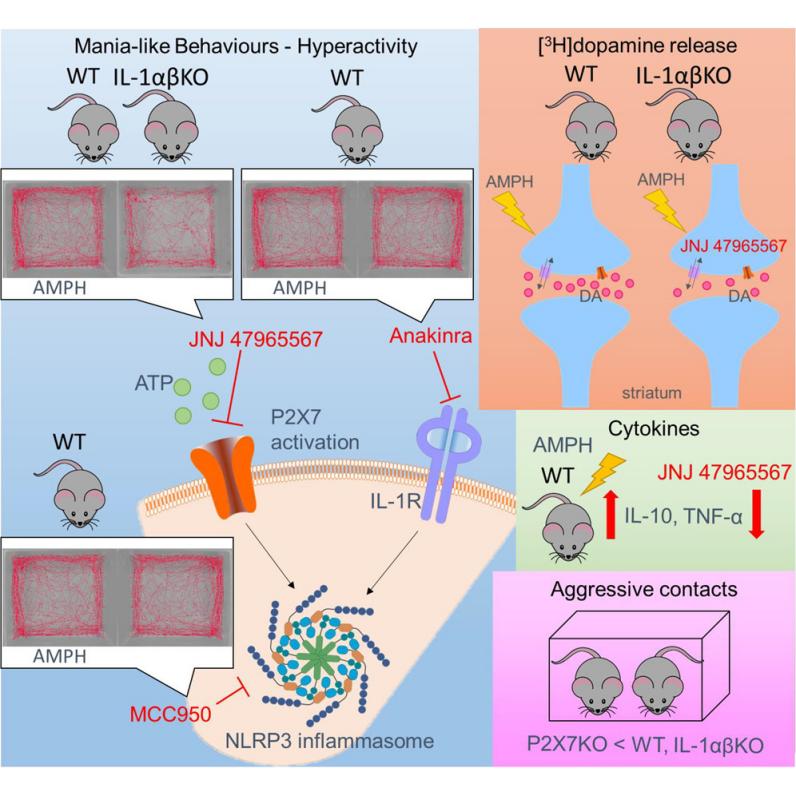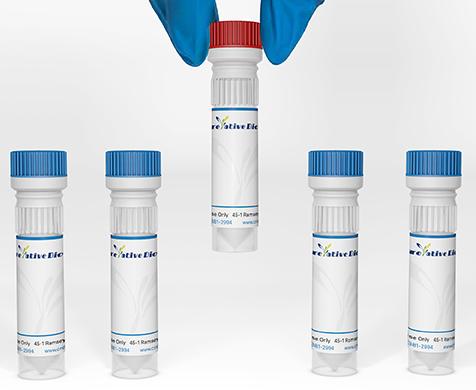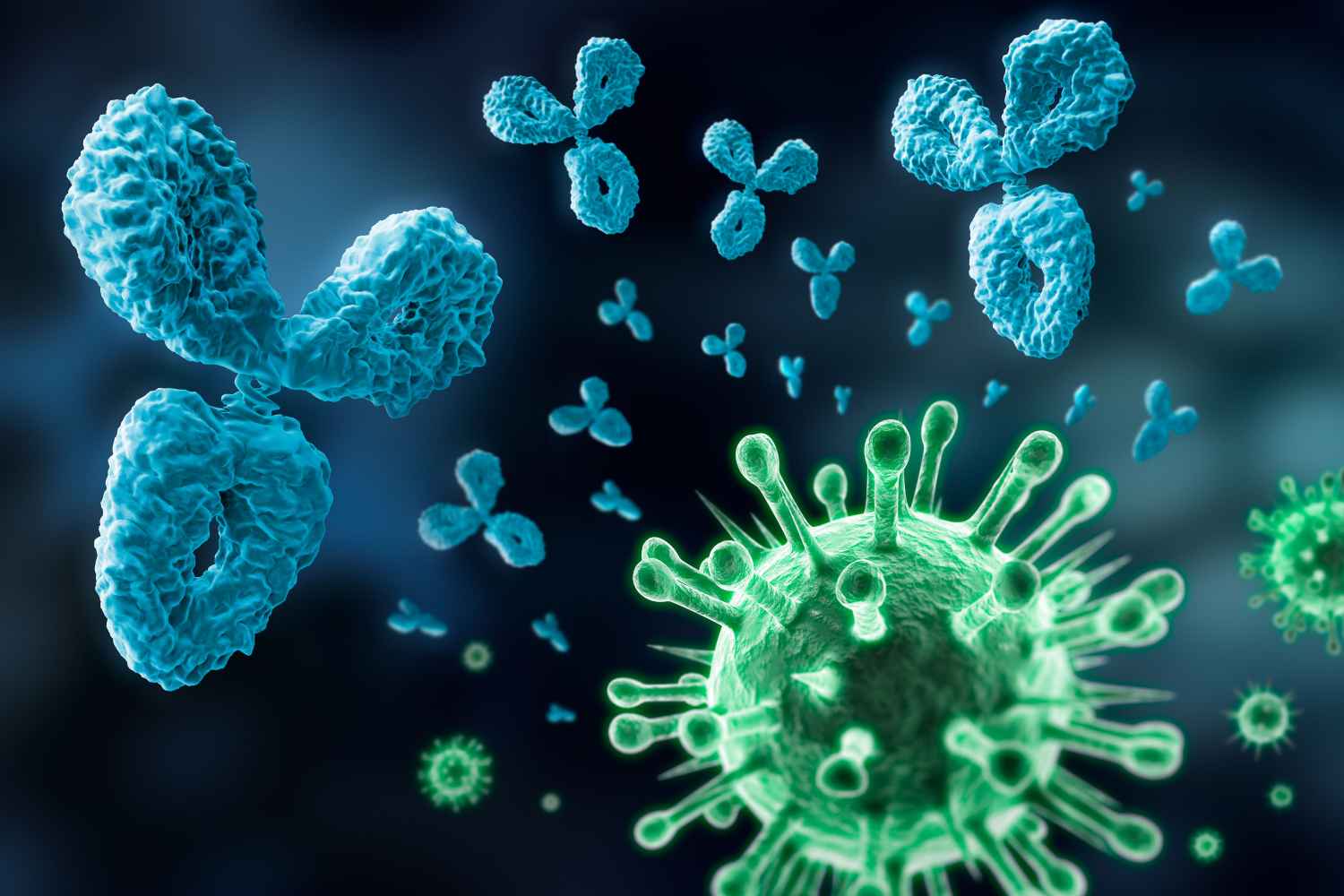AMPH Antibodies
Background
AMPH is a phenylethylamine central nervous system stimulant that mainly exerts its effect by promoting the release of monoamine neurotransmitters such as dopamine and norepinephrine. As an important psychoactive substance, AMPH can be used to treat diseases such as attention deficit hyperactivity disorder (ADHD), but it is also classified as a controlled drug due to its addictive nature. In 1933, American chemist Gordon Alles first synthesized amphetamine. This discovery not only pioneered the research of amphetamine-like drugs but also provided an important tool for neuropharmacological studies. AMPH regulates the concentration of neurotransmitters in the synaptic space through specific interactions with membrane proteins such as the dopamine transporter (DAT). This mechanism has become a classic model for studying the release and reuptake of neurotransmitters and is of great significance for understanding the mechanism of drug addiction and developing therapeutic drugs for neurological diseases.
Structure of AMPH
AMPH is a central nervous system stimulant with a molecular weight of 135.21 daltons (chemical formula C9H13N), and its molecular structure varies among different derivatives. Common derivative molecular weights: dextroamphetamine (135.21), methamphetamine (149.23), 3, 4-methylenedioxymethamphetamine (MDMA, 193.25). The structural differences are mainly reflected in: benzene ring substituents (methylamphetamine adds a methyl group), side chain modifications (MDMA adds a methylene dioxy group), etc. The AMPH molecule contains the basic skeleton of phenylethylamine, featuring a lipophilic benzene ring and a hydrophilic amino group, which makes it easy to pass through the blood-brain barrier. Its active center is a chiral β -carbon atom, and the pharmacological activity of the dextrorotatory form is significantly higher than that of the levorotatory form.
 Fig. 1 AMPH induces overactivity through the non-IL-1 β pathway of the P2X7 receptor.1
Fig. 1 AMPH induces overactivity through the non-IL-1 β pathway of the P2X7 receptor.1
Key structural properties of AMPH:
- Benzene rings are structurally similar to catecholamine neurotransmitters
- α -carbon methyl enhances stability
- Side chain amino group is involved in transporter interaction
These structural characteristics jointly mediate its specific binding to the dopamine transporter (DAT), promoting the release of neurotransmitters.
Functions of AMPH
AMPH is a phenylethylamine compound with multiple neuropharmacological effects. Its main functions include:
| Function | Description |
| Neurotransmitter release | By reversing the direction of action of the dopamine transporter (DAT), it promotes the release of dopamine from the presynaptic membrane. |
| Regulation of synaptic cleft | Inhibit the reuptake of monoamine neurotransmitters and prolong the transmission time of neural signals. |
| Central excitatory effect | Activate the reward pathway (midbrain limbic dopamine system), generating a sense of euphoria and motor excitement. |
| Regulation of cognitive function | Low doses can improve the executive function of patients with attention deficit hyperactivity disorder (ADHD). |
| Metabolic activation | Through the excitatory effect of the sympathetic nerve, it increases the basal metabolic rate and energy expenditure. |
The effect of AMPH shows dose-dependent characteristics: therapeutic doses (5-30mg) can improve attention, while abusive doses (>50mg) lead to overexcitement and addiction. Its pharmacodynamic curve shows a rapidly rising platform-like pattern, which is directly related to the occupancy of dopamine transporters. It is worth noting that the intensity of the effect of AMPH on different monoamine systems (dopamine, norepinephrine, 5-HT) varies significantly, and this selectivity is closely related to its molecular structural characteristics.
Applications of AMPH and AMPH Antibody in Literature
1. Amano, Ryota, et al. "Case report: Reversible brain atrophy with low titer anti-amphiphysin antibodies related to gastric adenocarcinoma." Frontiers in Neurology 14 (2023): 1211814. https://doi.org/10.3389/fneur.2023.1211814
This case reports a 75-year-old female who presented with tremors, hallucinations and cognitive impairment. MRI showed rapid progressive brain atrophy. Serum testing confirmed positive anti-AMPH antibody, accompanied by gastric cancer. After immunotherapy and tumor resection, symptoms improved, brain atrophy alleviated, and antibody levels decreased. This case suggests that Western blotting may still be truly positive when TBA is negative.
2. Chen, Yajun, et al. "AMPH1 functions as a tumour suppressor in ovarian cancer via the inactivation of PI3K/AKT pathway." Journal of Cellular and Molecular Medicine 24.13 (2020): 7652-7659. https://doi.org/10.1111/jcmm.15400
This study is the first to confirm that AMPH1 exerts an anti-cancer effect in ovarian cancer, inhibiting cell proliferation, migration and promoting apoptosis by suppressing the PI3K/AKT signaling pathway. Immunohistochemistry showed that the expression of AMPH1 in ovarian cancer tissues was significantly decreased, and both in vivo and in vitro experiments confirmed its anti-tumor effect.
3. Yan, Xinyu, Wenji He, and Sanqiang Pan. "Amphetamine-induced neurite injury in PC12 cells through inhibiting GAP-43 pathway." NeuroToxicology 93 (2022): 103-111.https://doi.org/10.1016/j.neuro.2022.09.004
Studies have found that amphetamine (AMPH) causes neurite damage in PC12 cells by inhibiting the PKCβ1/GAP-43 pathway. AMPH reduces the level of GAP-43 in striatum and inhibits its phosphorylation. The PKC activator PMA can reverse this injury, while the inhibitor enzastuarin aggravates it. The results indicated that the PKCβ1/GAP-43 pathway was the key mechanism of neurotoxicity of AMPH.
4. Bagalkot, Tarique, and Alexander Sorkin. "Amphetamine induces sex-dependent loss of the striatal dopamine transporter in sensitized mice." eneuro 11.1 (2024).https://doi.org/10.1523/ENEURO.0491-23.2023
In this study, through the HA-DAT gene knock-in mouse model, it was found that after repeated amphetamine (Amph) sensitization, the DAT protein in the striata of male mice significantly decreased by 30-60%, accompanied by a reduction in dopamine transport Vmax, and co-localization with the in vivo marker VPS35 increased. Chloroquine and ROCK1/2 inhibitors can block this process, suggesting that RHO-mediated endocytosis and post-endocytosis transport are involved in DAT degradation. This effect shows brain region specificity (significant in the nucleus accumbens) and gender dependence (male sensitivity), providing new insights into the mechanism of drug addiction.
5. Brynte, Christoffer, et al. "Impulsive choice in individuals with comorbid amphetamine use disorder and attention deficit-hyperactivity disorder." BMC psychiatry 23.1 (2023): 537. https://doi.org/10.1186/s12888-023-05034-x
This study compared the impulsive characteristics of ADHD complicated with amphetamine use disorder (ADHD+AMPH), simple ADHD and the healthy control group. The results showed that the ADHD+AMPH group had significantly higher self-assessment scores in motor skills, attention, and unplanned impulsivity, and performed worse in impulse selection tasks such as delayed aversion and reflex impulses, while there was no difference between the simple ADHD group and the healthy control group. It indicates that patients with ADHD+AMPH have specific impulse selection deficiencies and require targeted intervention strategies.
Creative Biolabs: AMPH Antibodies for Research
Creative Biolabs specializes in the production of high-quality AMPH antibodies for research and industrial applications. Our portfolio includes monoclonal antibodies tailored for ELISA, Flow Cytometry, Western blot, immunohistochemistry, and other diagnostic methodologies.
- Custom AMPH Antibody Development: Tailor-made solutions to meet specific research requirements.
- Bulk Production: Large-scale antibody manufacturing for industry partners.
- Technical Support: Expert consultation for protocol optimization and troubleshooting.
- Aliquoting Services: Conveniently sized aliquots for long-term storage and consistent experimental outcomes.
For more details on our AMPH antibodies, custom preparations, or technical support, please contact us.
Reference
- Gölöncsér, Flóra, et al. "P2X7 receptor inhibition alleviates mania-like behavior independently of interleukin-1β." Iscience 27.3 (2024). https://doi.org/10.1016/j.isci.2024.109284
Anti-AMPH antibodies
 Loading...
Loading...
Hot products 
-
Mouse Anti-AKT1/AKT2/AKT3 (Phosphorylated T308, T309, T305) Recombinant Antibody (V2-443454) (PTM-CBMAB-0030YC)

-
Mouse Anti-ACTG1 Recombinant Antibody (V2-179597) (CBMAB-A0916-YC)

-
Mouse Anti-CASP8 Recombinant Antibody (CBYY-C0987) (CBMAB-C2424-YY)

-
Mouse Anti-dsRNA Recombinant Antibody (2) (CBMAB-D1807-YC)

-
Mouse Anti-ATP1B1 Recombinant Antibody (E4) (CBMAB-0463-LY)

-
Rabbit Anti-AKT3 Recombinant Antibody (V2-12567) (CBMAB-1057-CN)

-
Mouse Anti-EMP3 Recombinant Antibody (CBFYE-0100) (CBMAB-E0207-FY)

-
Mouse Anti-AMIGO2 Recombinant Antibody (CBYY-C0756) (CBMAB-C2192-YY)

-
Mouse Anti-HTLV-1 gp46 Recombinant Antibody (CBMW-H1006) (CBMAB-V208-1154-FY)

-
Human Anti-SARS-CoV-2 Spike Recombinant Antibody (CBC05) (CBMAB-CR005LY)

-
Mouse Anti-AQP2 Recombinant Antibody (E-2) (CBMAB-A3358-YC)

-
Mouse Anti-ARG1 Recombinant Antibody (CBYCL-103) (CBMAB-L0004-YC)

-
Mouse Anti-CD19 Recombinant Antibody (CBXC-1224) (CBMAB-C1491-CQ)

-
Rat Anti-CCR2 Recombinant Antibody (475301) (CBMAB-C1338-LY)

-
Mouse Anti-EGR1 Recombinant Antibody (CBWJZ-100) (CBMAB-Z0289-WJ)

-
Mouse Anti-ALB Recombinant Antibody (V2-55272) (CBMAB-H0819-FY)

-
Mouse Anti-ADGRL2 Recombinant Antibody (V2-58519) (CBMAB-L0166-YJ)

-
Mouse Anti-BCL2L1 Recombinant Antibody (H5) (CBMAB-1025CQ)

-
Mouse Anti-ASTN1 Recombinant Antibody (H-9) (CBMAB-1154-CN)

-
Rabbit Anti-AKT2 (Phosphorylated S474) Recombinant Antibody (V2-556130) (PTM-CBMAB-0605LY)

- AActivation
- AGAgonist
- APApoptosis
- BBlocking
- BABioassay
- BIBioimaging
- CImmunohistochemistry-Frozen Sections
- CIChromatin Immunoprecipitation
- CTCytotoxicity
- CSCostimulation
- DDepletion
- DBDot Blot
- EELISA
- ECELISA(Cap)
- EDELISA(Det)
- ESELISpot
- EMElectron Microscopy
- FFlow Cytometry
- FNFunction Assay
- GSGel Supershift
- IInhibition
- IAEnzyme Immunoassay
- ICImmunocytochemistry
- IDImmunodiffusion
- IEImmunoelectrophoresis
- IFImmunofluorescence
- IGImmunochromatography
- IHImmunohistochemistry
- IMImmunomicroscopy
- IOImmunoassay
- IPImmunoprecipitation
- ISIntracellular Staining for Flow Cytometry
- LALuminex Assay
- LFLateral Flow Immunoassay
- MMicroarray
- MCMass Cytometry/CyTOF
- MDMeDIP
- MSElectrophoretic Mobility Shift Assay
- NNeutralization
- PImmunohistologyp-Paraffin Sections
- PAPeptide Array
- PEPeptide ELISA
- PLProximity Ligation Assay
- RRadioimmunoassay
- SStimulation
- SESandwich ELISA
- SHIn situ hybridization
- TCTissue Culture
- WBWestern Blot








